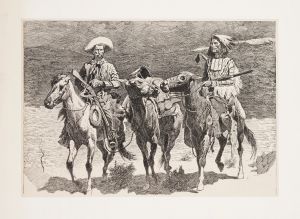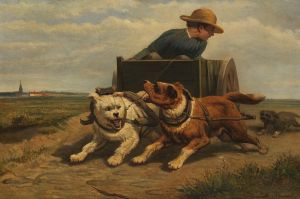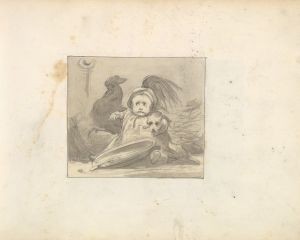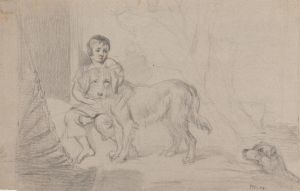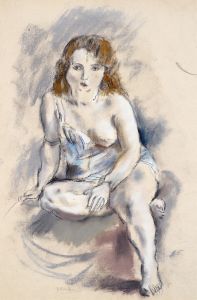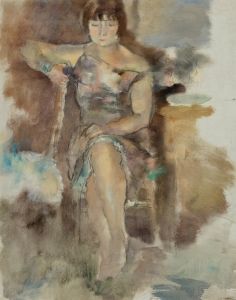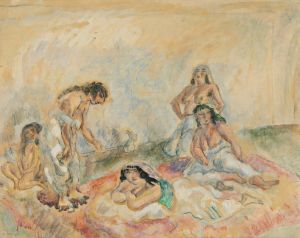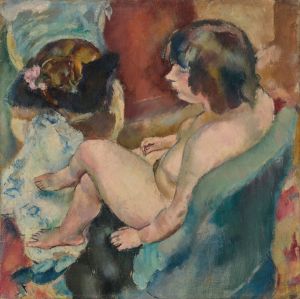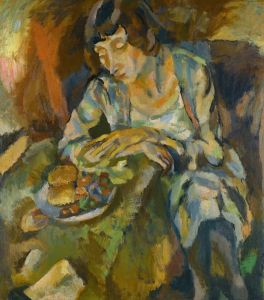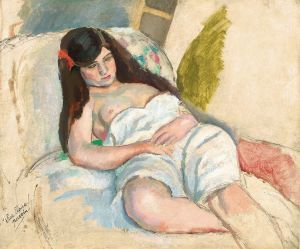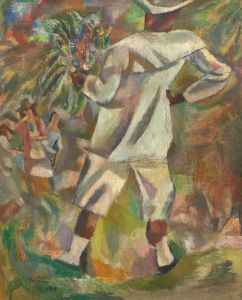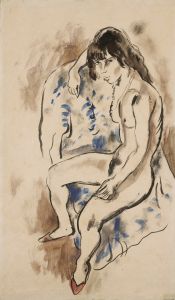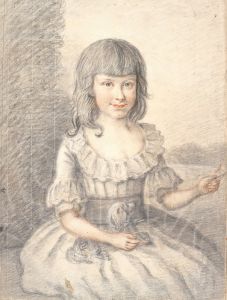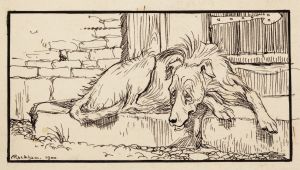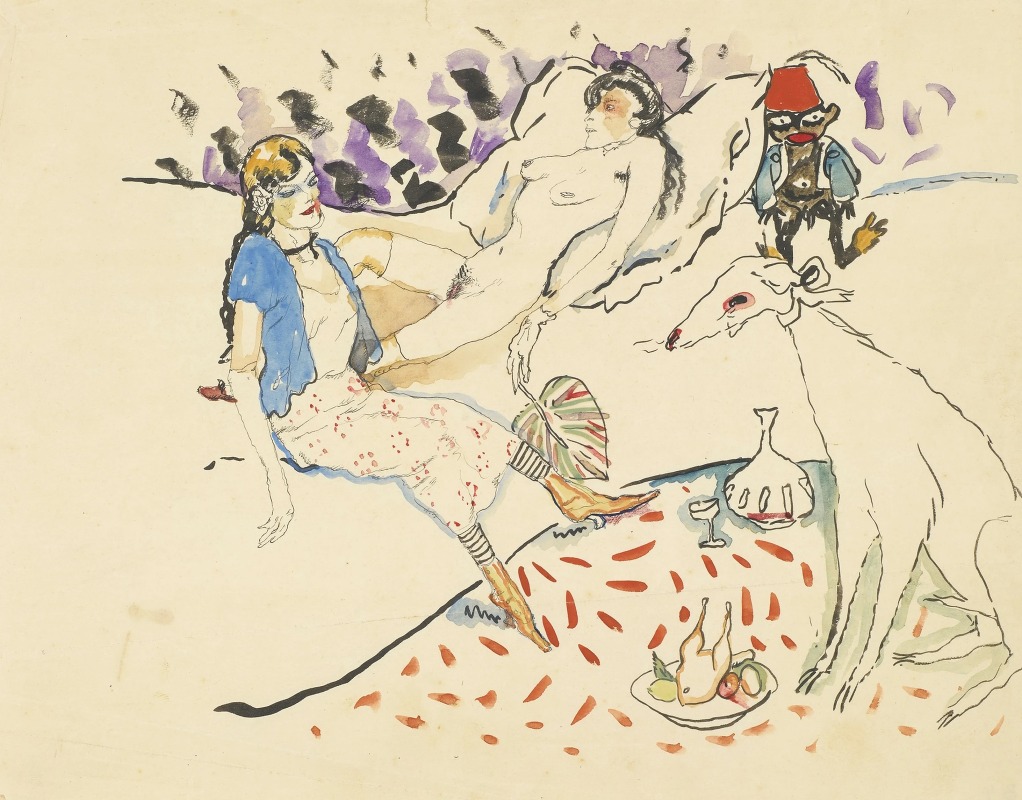
Femme avec son chien et nu
A hand-painted replica of Jules Pascin’s masterpiece Femme avec son chien et nu, meticulously crafted by professional artists to capture the true essence of the original. Each piece is created with museum-quality canvas and rare mineral pigments, carefully painted by experienced artists with delicate brushstrokes and rich, layered colors to perfectly recreate the texture of the original artwork. Unlike machine-printed reproductions, this hand-painted version brings the painting to life, infused with the artist’s emotions and skill in every stroke. Whether for personal collection or home decoration, it instantly elevates the artistic atmosphere of any space.
"Femme avec son chien et nu" (Woman with Her Dog and Nude) is a painting by the Bulgarian-French artist Jules Pascin. Born Julius Mordecai Pincas on March 31, 1885, in Vidin, Bulgaria, Pascin became a prominent figure in the early 20th-century art world, particularly known for his association with the École de Paris. He was a prolific artist, producing numerous works that often depicted intimate and sensual scenes.
Pascin moved to Paris in 1905, where he became part of the vibrant Montparnasse art scene. He was known for his bohemian lifestyle and his friendships with other notable artists and writers of the time. His work is characterized by its delicate and often melancholic portrayal of women, capturing their vulnerability and beauty with a distinctive style.
"Femme avec son chien et nu" is a testament to Pascin's skill in capturing the human form and his sensitivity to the subtleties of human emotion. The painting features a woman accompanied by a dog, with a nude figure in the background. This composition reflects Pascin's interest in the interplay between clothed and unclothed figures, a recurring theme in his work. The presence of the dog adds a layer of domesticity and companionship to the scene, contrasting with the more sensual and exposed nature of the nude figure.
Pascin's technique often involved the use of soft, flowing lines and a muted color palette, which can be seen in "Femme avec son chien et nu." His brushwork is delicate, creating a sense of intimacy and immediacy. The figures are rendered with a sense of tenderness and introspection, inviting the viewer to contemplate their inner lives and emotions.
Throughout his career, Pascin's work was exhibited widely, and he gained considerable recognition and acclaim. However, his life was also marked by personal struggles, including bouts of depression and alcoholism. These struggles ultimately led to his tragic suicide on June 2, 1930, in Paris. Despite his relatively short life, Pascin left behind a significant body of work that continues to be celebrated for its emotional depth and artistic finesse.
"Femme avec son chien et nu" is a poignant example of Pascin's ability to convey complex human emotions through his art. The painting remains an important piece within his oeuvre, reflecting both his technical skill and his deep empathy for his subjects. Today, Pascin's works are held in numerous public and private collections around the world, and he is remembered as a key figure in the history of modern art.





